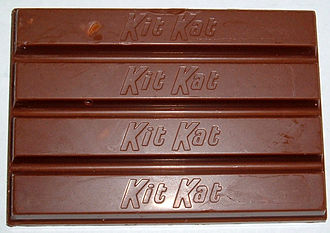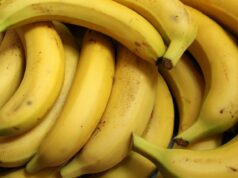- KitKat is a popular chocolate-covered wafer bar that was first introduced in 1935 by the British confectionery company Rowntree’s.
- It was initially called “Chocolate Crisp” before being rebranded as KitKat in 1937.
- KitKat’s iconic shape features four finger-like bars that can be snapped apart, making it a shareable treat.
- The name “KitKat” is believed to have been inspired by a type of medieval manual called “Kit-Cat,” which was a reference to a popular British mutton pie.
- KitKat is known for its distinctive “Have a Break, Have a KitKat” slogan, emphasizing its role as a snack to be enjoyed during breaks.
- The original KitKat bar was made with milk chocolate, but different flavors and variations have been introduced over the years.
- KitKat bars are available in various sizes, including single fingers, two-finger packs, four-finger multipacks, and chunky bars.
- In 1988, Nestlé acquired Rowntree’s, and KitKat became one of its most recognizable global brands.
- KitKat has a strong presence in Japan, where it has become synonymous with good luck due to its similarity in pronunciation to the Japanese phrase “kitto katsu,” meaning “surely win.”
- KitKat’s popularity in Japan has led to the introduction of numerous unique and limited-edition flavors, such as green tea, wasabi, and sake.
- KitKat has released special editions inspired by seasonal events, holidays, and cultural celebrations, such as Valentine’s Day and Christmas.
- The wafer in KitKat bars is made by layering thin sheets of baked batter to create a crispy texture.
- KitKat is known for its “snap,” which is achieved by applying a specific pressure during the production process to create the breakable texture.
- KitKat is made with sustainably sourced cocoa through Nestlé’s Cocoa Plan, which aims to support cocoa farmers and ensure responsible sourcing practices.
- KitKat has a dedicated following of fans who collect and trade different KitKat flavors from around the world.
- KitKat has collaborated with other brands and released special edition flavors in partnership with popular chocolate brands, such as Ruby chocolate and Matcha Green Tea KitKat.
- KitKat has experimented with unique flavor combinations, including KitKat with mint, orange, hazelnut, caramel, and even limited-edition savory flavors.
- KitKat has been used as an ingredient in various desserts and recipes, such as KitKat milkshakes, KitKat ice cream, and KitKat cheesecake.
- KitKat has a range of different textures, including classic crispy wafers, smooth milk chocolate, and crunchy additions like nuts or caramel.
- KitKat has a distinctive red and white color scheme on its packaging, which has become instantly recognizable worldwide.
- KitKat bars are manufactured in various countries, including the United Kingdom, Japan, Australia, and Canada, to meet global demand.
- KitKat has had successful marketing campaigns, including interactive advertisements and partnerships with popular TV shows and movies.
- KitKat has its own themed retail stores, such as the KitKat Chocolatory, where customers can create their own customized KitKat bars.
- KitKat has a strong social media presence, with dedicated accounts that engage with fans, share new flavors, and encourage user-generated content.
- KitKat has introduced “break-time experiences,” such as virtual reality relaxation pods and pop-up KitKat cafes, to enhance the enjoyment of its product.
- KitKat has a limited-edition “KitKat Senses” range, which features bite-sized pieces with indulgent fillings like hazelnut, salted caramel, and double chocolate.
- KitKat has collaborated with renowned chefs and pastry chefs to create exclusive KitKat desserts and experiences.
- KitKat has been featured in popular culture, appearing in movies, TV shows, and even becoming the inspiration for songs and artwork.
- KitKat has a strong association with nostalgia, with many consumers having fond memories of enjoying KitKat bars during childhood or as a comforting treat.
- KitKat has played with texture variations, introducing KitKat Chunky bars, which have a thicker, chunkier wafer and more chocolate coating.
- KitKat has a range of miniatures, including individually wrapped bite-sized KitKat bars that are perfect for snacking or sharing.
- KitKat has supported environmental initiatives, introducing eco-friendly packaging and promoting recycling of its packaging materials.
- KitKat has launched limited-edition “KitKat Chocolatory” workshops, where customers can design and create their own personalized KitKat bars.
- KitKat has been involved in philanthropic efforts, including collaborations with charities to raise funds for various causes.
- KitKat has been an official sponsor of major sporting events, such as the Olympic Games and FIFA World Cup.
- KitKat has a rich history of memorable advertising campaigns, featuring slogans, jingles, and memorable characters.
- KitKat has become a cultural icon, symbolizing a break or moment of relaxation in many parts of the world.
- KitKat has a reputation for quality and consistency, with its distinct combination of crispy wafer and smooth chocolate.
- KitKat bars are often associated with convenience stores and vending machines, making them easily accessible for snacking on the go.
- KitKat has introduced limited-edition flavors inspired by popular desserts and treats, such as tiramisu, lemon drizzle, and red velvet cake.
- KitKat’s manufacturing process involves precise temperature control to ensure the wafer layers are properly baked and crisp.
- KitKat has a global fan base, with dedicated KitKat enthusiasts forming online communities and sharing their love for the brand.
- KitKat has won numerous awards for its packaging design, marketing campaigns, and product innovation.
- KitKat has a range of portion-controlled options, including KitKat Miniatures, which come in small bags for snacking on the go.
- KitKat’s breakable design has become a playful element for consumers, often encouraging them to share a KitKat break with friends or loved ones.
- KitKat has been enjoyed as a quick and convenient snack by generations, becoming a beloved treat for people of all ages.
- KitKat’s manufacturing process involves multiple layers of wafer and chocolate, creating a satisfying textural contrast in every bite.
- KitKat has inspired DIY recipes and creative desserts, with fans incorporating KitKat bars into cakes, cookies, and milkshakes.
- KitKat’s global success has led to it being available in over 80 countries, each with its own unique flavor variations.
- KitKat continues to innovate and surprise consumers with new flavor combinations, limited editions, and interactive experiences to keep the brand fresh and exciting.
Here are some statistics related to KitKat:
- KitKat is sold in more than 80 countries worldwide.
- Approximately 650 KitKat fingers are consumed every second globally.
- KitKat is one of the top-selling chocolate brands in the world.
- The original KitKat flavor, milk chocolate, remains one of the most popular varieties.
- KitKat Chunky, with its thicker wafer and more chocolate, is a popular variation of the original KitKat.
- Nestlé, the parent company of KitKat, produces over 4 billion KitKat bars each year.
- The largest KitKat bar ever made weighed approximately 3,000 kilograms (6,614 pounds).
Facebook Comments


































